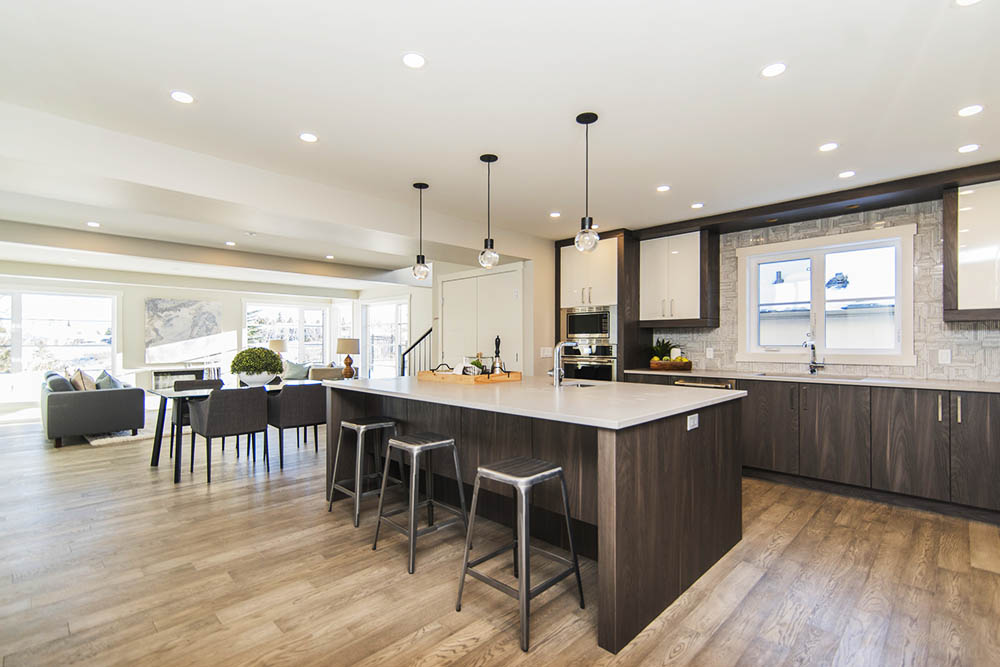Lighting is a crucial element in any home, as it can not only impact the aesthetic appeal of the space but also affect the mood and atmosphere created within the area. From setting a romantic mood in the bedroom to creating a vibrant ambience for hosting guests in the living room, your home’s lighting has the power to transform your space. In this article, we’ll discuss the power of home lighting, practical tips to help you achieve the perfect lighting design and how to select the right light for each room.
Understanding the Power of Lighting
The way you light your home can make a massive difference in how you feel, perform tasks, and interact with the space around you. Proper lighting makes everything feel more organized and attractive, and can even impact your mental and emotional well-being. Strategically placed lights can also make your space feel more substantial, brighter and enhance the overall appeal.
A well-lit home can also lead to better productivity, as lighting can influence your mood and energy levels — both of which are crucial factors to consider when designing your lighting layout. Brighter lights, for instance, are better for workspaces as they stimulate brain productivity, whereas lower light levels are perfect for relaxing spaces such as bedrooms and living areas, where you want to create a more relaxed atmosphere.
Tips for Achieving the Perfect Lighting Design
Designing the perfect lighting scheme is all about balance: it’s essential to find the right balance between style, functionality, and energy consumption. Here are some tips to help you find the perfect balance when designing your lighting layout:
Start with a Plan
Before investing in any light fixtures, start by creating a detailed lighting plan. This plan should include a list of each room in your house and what they will be used for (e.g., work, sleep, entertaining), as well as your preferences for style and overall vibe. Consider factors such as natural light, colors in the room, and how existing furniture and other fixtures might affect the lighting.
Layers of Light
Ideally, it’s best to use a combination of different types of lighting to create a layered effect. Different types of lighting serve different purposes and help create a dynamic mood in your home. Create different layers of lighting (e.g., ambient, task, specific) to enhance the functionality and feel of each room.
Focus on Functionality and Efficiency
Although style is important, it’s not the only thing that matters when it comes to lighting. The primary purpose of lighting in your home is to provide adequate illumination while also being energy-efficient. Choose bulbs with high efficacy ratings (lumens per watt) for efficiency and select fixtures and bulbs that emit the right amount of light for each specific room.
Selecting the Right Light for Each Room
Different rooms in your home may need different types of lighting, depending on their specific function and usage. Here are some tips to help you select the right light for each room:
Kitchen
The kitchen is one of the heavily used areas in the home, requiring bright task lighting for food preparation, cooking, and cleaning. Under-cabinet lighting is an excellent addition to any kitchen as it provides ambient lighting and task lighting all in one.
Bedroom
The bedroom should have a warm and inviting atmosphere, emphasizing relaxation and calmness. Using dimmable sconce or floor lamps with a low dim lighting bulb can add a soft and soothing touch to the room.
Bathroom
Similar to the kitchen, bathrooms require lots of task lighting to adequately illuminate the space for grooming and hygiene. If possible, consider installing lighting above or around the bathroom mirror to create a brighter and more even illumination.
Living Room
The living room is one of the most versatile spaces in the home, and your lighting design should reflect that flexibility by combining various types of lighting. Incorporate overhead lighting, table lamps, and floor lamps to create a warm and inviting atmosphere.
Conclusion
Lighting can have a significant impact on how you feel and interact with your living space. It’s crucial to take the time to design a lighting layout that will bring life and energy into your home. By considering function, efficiency, style, and personal preference, you can create a dynamic lighting design that transforms every room in your home into an inviting and comfortable space. Remember to incorporate different layers of lighting and use the right bulbs and fixtures to achieve the perfect ambiance in each room.
